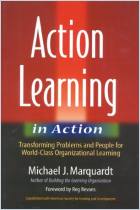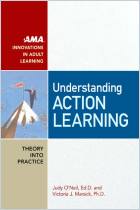Únase a getAbstract para acceder al resumen.

Únase a getAbstract para acceder al resumen.
Michael J. Marquardt
Optimizing the Power of Action Learning
Solving Problems and Building Leaders in Real Time
Davies-Black Publishing, 2004
¿De qué se trata?
When action learning teams address real problems for your organization, be prepared for fast, but thoughtful, solutions.
Recommendation
People with an intense interest in knowing all the details of action learning will find the answer to their prayers in this book. Author Michael J. Marquardt writes with the zeal of a revival tent preacher, filled with the sincere belief that action learning can help solve any problem, meet any challenge or achieve any aspiration. As he clearly explains, action learning is intended to build both knowledge and leadership. He sets out the steps your organization should pursue to implement action learning, and to use it well. He includes questions, checklists and extensive examples. All he omits are any caveats or cautions about this approach. He’s a booster and an expert, just so you know where he’s coming from. getAbstract recommends his manual to human resource professionals.
Summary
About the Author
Educator and consultant Michael J. Marquardt, is professor of human resource development and Program Director of Overseas Programs at The George Washington University. As president of Global Learning Associates and director of The Global Institute for Action Learning, he has trained thousands of managers around the world. His previous books include Building the Learning Organization, Action Learning in Action and Global Teams.
























Comment on this summary